Weather is an unpredictable player in the construction industry. A sunny day can quickly turn into stormy weather, and construction workers find themselves battling heavy showers, making their job much more complex. Without appropriate rain gear, they're at risk of slipping, suffering discomfort, or facing health issues. That's where mission-critical rain gear steps in, turning a potential work-stoppage into a manageable situation. This article delves into the importance of rain gear for construction workers, the types of rain gear essential for a construction site, and how to choose and maintain them. We'll also touch upon the critical extras to carry during rain and legal requirements for rain gear in construction. Get ready to equip yourself with complete knowledge of construction rain gear that ensures safety, comfort, and productivity, no matter what the weather throws at you.
Importance of Rain Gear for Construction Workers
Construction work, as we all know, is tough. It's often conducted outside, subject to the whims of Mother Earth. As such, adverse weather conditions frequently become a part of a worker's everyday reality. That's why choosing the appropriate rain gear is essential—it can significantly enhance safety, comfort, and health protection. Let's delve deeper into each of these aspects.
Safety in Wet Conditions
It's no secret that wet conditions can increase the likelihood of accidents on a construction site. Slippery surfaces become a danger, and visibility often diminishes during heavy rainfall. How can suitable rain gear help out?
- Waterproof Footwear: Shoes with non-slip soles can minimize the risk of slipping on wet surfaces. Rain boots made specifically for construction work can give that much-needed grip on unpredictable terrain.
- High Visibility Clothing: A murky, rainy day can limit vision. Outfitting construction workers in high-visibility, rain-proof jackets can make them easily identifiable, reducing the risk of accidents.
- Waterproof Gloves: They give workers a better grasp of tools and equipment, preventing potential mishaps caused by slippage in damp conditions.
Comfort and Productivity
Rain can make even the simplest tasks tough; everything is just stickier, heavier, and more cumbersome. The right rain gear, however, can make all the difference. It keeps workers dry, aiding productivity by allowing them to proceed with tasks without the discomfort of being wet.
- Breathable materials: A raincoat made from breathable fabric can prevent perspiration buildup, reducing discomfort while working.
- Waterproof trousers and jackets: These help keep workers dry during downpours, ensuring they can continue working without feeling wet and clammy.
Health Protection
Ever worked for hours while being drenched? It's not fun—and it's not healthy either.
Continuous exposure to wet conditions can lead to health issues such as colds, pneumonia, or flare-ups of arthritis. Appropriate rain gear, such as waterproof, insulated coats and gloves, help protect workers from these conditions, maintaining their health and preventing absenteeism.
"A rainy day shouldn't mean a bad day at work. With the right gear, we can stay safe, comfortable, and healthy, even in the wettest of conditions," John Doe, a construction worker, states.
Remember, the choice of rain gear plays a pivotal role in keeping our construction workers safe, comfortable, and healthy. So the next time you see construction workers continuing their tough labor, even as rain pours down, know that their rain gear is doing more than just keeping them dry—it's also keeping them safe and healthy, allowing them to continue their crucial work, no matter what the weather throws at them.
Essential Rain Gear Types for Construction Workers
When you're in the construction industry, few forces of nature quite match the adversity brought on by the rain. It's not just about getting wet; it's the slipping, sliding, and visibility issues that make rain a noteworthy foe for construction work. But with the right gear, you can turn this foe into a friend. Here are some of the essential rain gear types designed specifically for construction workers:
Waterproof Work Boots
Waterproof work boots are the unsung heroes in a construction worker's wardrobe. They ensure that your feet stay dry while you're navigating the rainy worksite, preventing the discomfort and health risks that come from working in soaked boots. These boots often come with anti-slip soles to provide better traction on slippery surfaces. There are various types, ranging from calf-length boots to ankle-length ones. Thus, there's a boot for every worker and every condition.
Rain Jacket
The rain jacket is your first line of defense when the skies open up. It not only keeps your upper body from getting soaked but can also be equipped with features like hood brims to keep water off your face. High-visibility rain jackets are also available, ensuring safety in dim, rainy conditions.
"In rain, every piece of clothing matters - but none more than the rain jacket."
Waterproof Overalls
Rainy days demand waterproof overalls. These are tailored to keep you dry from your shoulders to your ankles. Since construction work often involves dealing with dirt and mud, these overalls can also add an extra layer of protection that'll keep the rest of your clothes clean.
Waterproof Gloves
Your hands are your principal tools when at a construction site, and the tools must be taken care of. Waterproof gloves preserve your grip when it's wet and cold, ensuring productivity isn't hampered. Many gloves have a liner that provides warmth as well, making them perfect for rain and chillier weathers.
Safety Glasses
Last but not least, you can't ignore the need for safety glasses. In the rain, they serve two purposes: one, they protect your eyes from getting wet and, two, they shield your eyes from projectiles loosened by the rain.
Remember, a storm on the horizon should not mean a storm in your heart. With these essential rain gear types as part of your gear, you're ready to take on whatever Mother Nature throws at you. Stay dry, stay efficient, and most importantly, stay safe.
Guidelines to Choose Right Rain Gear
Whether you're a seasoned outdoor enthusiast or someone just starting a new hobby, you know that the success of your adventure largely depends on being prepared. This means equipping yourself with the right gear, especially for those unpredictable weather times, like a sudden downpour. And when it comes to rain gear, not all are created equal. To ensure you stay dry, cozy, and safe during a rainstorm, here are some important guidelines to consider.
1. Waterproof Capability
Waterproof capability is the primary function of any rain gear. You wouldn't want to be caught in the rain wearing something that can't keep you dry, would you? However, it's vital to be aware of the difference between water-resistant and waterproof.
Water-resistant gear can handle light precipitation but may not hold up well to prolonged or heavy rainfall. On the other hand, waterproof rain gear offers superior protection, designed to prevent water from seeping through altogether. Choosing the right kind will largely depend on the severity of weather you are anticipating.
2. Durability
The best rain gear is the one you can rely on, time after time. After all, what's the use if it falls apart after just a few uses? Quality materials and robust construction are essential for lasting through several seasons of use.
Check out the seams: are they taped or welded? This is an important detail as it can ensure no leakage points where water can seep in. Also, consider a gear featuring ripstop fabric, known for its increased resistance to tears and frays.
3. Comfort and Fit
Comfort is a key factor, especially when you'll be wearing your rain gear for extended periods. Look for gear designed with breathability in mind – it should allow for airflow to avoid the "sauna effect", thus preventing you from being soaked in your sweat instead of the rain.
When it comes to fit, you want rain gear that allows you flexibility of movement. It shouldn't be so tight that it restricts you, nor so loose that it lets rain and wind sneak in. Many designs include adjustable elements such as hoods, cuffs, and waistbands to customize the fit to your body and needs.
4. Visibility
Lastly, don't forget about visibility. Especially in heavy rain or fog, it’s vital to ensure others can see you clearly, reducing the risk of accidents. Opt for rain gear with reflective panels or in bright, high-contrast colors.
In a nutshell, choosing the right rain gear means bearing in mind these four core factors: waterproof capability, durability, comfort, and visibility. Armed with these guidelines, it should be easier to navigate the wide range of options available and select the gear that'll best serve you in the wet weather.
Measures to maintain and extend the life of rain gear
Proper Cleaning
Rain gear is designed to withstand harsh conditions; however, routine cleaning is crucial to ensure its longevity. Dirt and grime accumulation can erode waterproofing layers, making them less effective over time. It's essential to know that not all rain gear requires the same cleaning approach. Here are some general tips:
- Check manufacturer instructions: Always abide by the manufacturer's rules concerning cleaning and maintenance. They hold the most accurate knowledge about their products.
- Avoid harsh detergents: Always use cleaner specially designed for rain gear. Strive to avoid standard laundry detergents as they can contain additives that may degrade the waterproofing traits of your gear.
- Handwashing is advisable: If possible, handwash your rain gear as machine washing can be excessively harsh.
Regular Inspection
Consistent health checks of your rain gear help you identify potential issues like broken zippers or worn-out areas before they turn into larger problems. The application of appropriate repair solutions at an early stage could significantly extend the life span of your rain gear. Focus on the following aspects during inspection:
- Assess the waterproof layer: Regularly check the outer surface for signs of peeling or flaking.
- Look for wear-and-tear: Pay attention to usual wear areas, such as elbows, knees, and shoulders. These spots are more likely to show signs of distress first.
- Check the seams: The seams are crucial mode of entrance for rain. Consider investing in seam sealer to apply to these germinal leak points before they become problematic.
Correct Storage
After using and cleaning your rain gear, don't overlook the importance of correct storage. Mismanagement during storage can negatively impact your gear's overall condition and shorten its life expectancy. Here are some closing gaps:
- Dry thoroughly before storage: Whether it's after cleaning or using, make sure your gear is completely dry before storing it. Storing wet clothing can lead to mold and mildew, impacting both the fabric's health and longevity.
- Avoid folding: Over time, folding can lead to creases where the waterproof layer might crack. Instead, hang your rain gear or loosely roll it.
- Consider the right storage conditions: A dark, cool, and dry place is the optimal storage condition for your rain gear. Exposure to sunlight can cause the material to degrade, while high temperatures and humidity can wreak havoc on the waterproofing.
In the end, by considering these tips, your gear will retain its top-notch performance, keeping you dry and comfortable in the most challenging rainy conditions. Remember, taking good care of your equipment makes it take good care of you!
Extra gear to carry during rains
As the climate shifts and rain showers become frequently unpredictable, it's wise to be prepared for sudden downpours when you step out of your house. Don't let the rains ruin your schedule, or even worse, your precious belongings. In this section, we will discuss three essential items to carry during rainy weather that can help keep you dry and your belongings safe from the rain. These items are an umbrella, a waterproof bag, and non-slip original galoshes.
Umbrella
Let's start with the most obvious item - an umbrella. While it may sound archaic in the age of high-tech rain jackets and gizmos, there is an irrefutable charm and practicality to using an umbrella. It provides instantaneous protection against the rain, can cater to more than one person, and is easy to dry and store afterwards. Importantly, it can be styled as a fashion accessory, adding a dash of personality to your rainy day outfit.
Waterproof Bag
Next on the list is a waterproof bag. Have you ever been stuck in the rain, thinking about the important paperwork or the high-tech gadgets inside your bag getting drenched? Well, a waterproof bag solves that problem. These bags are specially designed to resist water ingress and to keep your valuables dry. They come in various sizes and styles to suit different needs. A backpack, a messenger bag, or a tote bag - choose whichever complements your lifestyle and needs the best.
Non-Slip Original Galoshes
Last but not least, consider carrying non-slip original galoshes during rainy weather. Walking on wet, slippery surfaces can often be tricky, leading to unnecessary accidents. Investing in a good pair of non-slip galoshes can ensure safety and comfort as you navigate through the pours. With galoshes, you can step into puddles without any worries, keeping your feet dry and your pace unhindered.
By equipping yourself with these essential gears - an umbrella, a waterproof bag, and non-slip original galoshes, rainy days will become less of an inconvenience and more of a refreshing experience. After all, it's always better to be equipped and face the challenge rather than struggling with it unpreparedly.
Legal Requirements for Rain Gear in Construction
Rain gear is an unsung hero in the construction industry. It allows employees to maintain productivity, even in unfavorable weather conditions, and most importantly, shields them from potential health and safety risks. In the United States, there are certain legal requirements concerning the use of rain gear in the construction industry. These guidelines, determined by the likes of the American National Standards Institute (ANSI) and the Occupational Safety and Health Administration (OSHA), aim to protect workers from risks associated with wet weather.
American National Standards Institute (ANSI) Guidelines
The ANSI sets forth specific criteria for High-Visibility Safety Apparel (HVSA). These standards ensure that workers are appropriately visible in adverse weather conditions, reducing the possibility of accidents on busy construction sites. The ANSI-approved rain gear should meet the following requirements:
- They must have a background material that is either fluorescent yellow-green, fluorescent orange-red or fluorescent red.
- They must have retro-reflective material in orange, yellow, yellow-green, white, silver, gray, or a fluorescent color, arranged in either bands or braces format.
- Lastly, they should comply with either Performance Class 1 (lowest visibility), 2, or 3 (highest visibility).
These guidelines are not merely suggestions but a necessity for all rain gear used in construction sites.
Occupational Safety and Health Administration (OSHA) Guidelines
OSHA also maintains rigorous guidelines requiring employers to provide workers with ‘waterproofed or water-repellant’ gear if they are to be exposed to wet conditions.
- The gear should be designed to shield the body, including the legs and torso.
- The gear should be maintained in safe, sanitary conditions.
- The employers must inspect the gear as often as necessary to ensure that it is in a safe, sanitary and defect-free condition.
Following OSHA’s guidelines is not just about compliance; it’s about worker safety, reducing workplace injuries, and maintaining a more productive and efficient worksite, whatever the weather.
Ensuring that worker's rain gear matches these guidelines is, therefore, not only a legal requirement but also crucial for the safety and wellbeing of the construction workforce. Thus, the procurement and provision of the correct rain gear should be a top priority for all construction industry participants. As they say, "there's no such thing as bad weather, only unsuitable clothing".
Conclusion
In a challenging profession like construction, rainy days shouldn't hinder productivity. A comprehensive rain gear kit – including the essentials like rain jackets, waterproof overalls, safety glasses, gloves, and work boots – can be a game-changer. By choosing high quality, durable, and weatherproof gear from trusted sources like Hurricane Raingear, you can ensure your safety and comfort during unfavorable weather conditions.
Remember, your safety doesn't solely depend on gear quality, but also on regular cleaning, inspection, and proper storage. By integrating these practices, you can extend the lifespan of your rain gear, ensuring its reliability when you need it the most.
Lastly, being informed about the guidelines from authoritative bodies like ANSI or OSHA can also help you select compliant gear, offering an extra level of security. From the moment a drop hits the ground to the last roll of thunder, trust your safety to the right gear and sail through your day, rain or shine. Visit Hurricane Raingear for quality products designed with your safety and comfort in mind. Compliment the rain, don't just weather it!
Frequently Asked Questions
-
What rain gear is essential for construction workers?
Essential rain gear for construction workers includes waterproof jackets, pants, and boots, as well as waterproof gloves, hats, and safety glasses.
-
Why is it important for construction workers to have rain gear?
Rain gear is important for construction workers as it protects them from getting wet and helps maintain body temperature, reducing the risk of hypothermia and illness. It also improves comfort and productivity on the job site.
-
What features should I look for in rain gear for construction work?
When selecting rain gear for construction work, look for waterproof and breathable materials, sealed seams, adjustable cuffs, and hoods. It's also important to choose gear with good visibility options, durable construction, and reflective elements for increased safety.
-
Are there any specific brands known for manufacturing high-quality rain gear for construction workers?
Yes, some popular brands known for manufacturing high-quality rain gear for construction workers include Carhartt, Helly Hansen, Columbia, Marmot, and Grundéns.
-
Can I use regular rain gear for construction work or do I need specialized gear?
While regular rain gear can offer some level of protection, it is recommended to use specialized rain gear designed for construction work. Specialized gear often includes additional features like reinforced knees and elbows, extra pockets for tools, and hi-vis materials for better visibility.



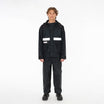



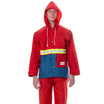


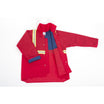

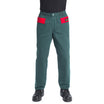



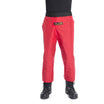






Leave a comment
This site is protected by hCaptcha and the hCaptcha Privacy Policy and Terms of Service apply.